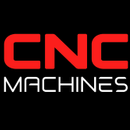The Evolution of Shipbuilding and the Impact of CNC Technology

The Evolution of Shipbuilding and the Significance of CNC Technology
Shipbuilding has been integral to global development for centuries, linking continents through trade routes and driving naval innovation. Over time, the industry has transitioned from crafting basic wooden boats by hand to engineering steel behemoths using state-of-the-art machinery. A key player in this modern wave of innovation is Computer Numerical Control (CNC) technology, which has revolutionized precision, efficiency, and scalability in shipbuilding processes.
From Ancient Times to Modern Marvels
The earliest vessels—simple rafts and canoes—were constructed using readily available materials such as reeds or timber. As civilizations advanced, wooden hulls became more sophisticated, enabling trade expansion and the development of naval power. By the mid-19th century, iron and steel replaced wood as the primary construction materials, dramatically increasing ship sizes and resilience.
Steam engines soon joined the mix, further accelerating the shipping industry's growth. The ability to propel vessels with power independent of wind currents opened new commercial and exploration opportunities. During the 20th century, breakthroughs in welding, assembly line methods, and modular construction propelled shipyards toward ever-greater efficiency, laying the groundwork for the digital and automated technologies used today.
The Role of Material Innovations
Progress in metallurgy significantly enhanced hull strength and durability. Alloyed steel, capable of resisting extreme sea conditions, supported larger and more stable vessels. Simultaneously, research into lightweight composites and corrosion-resistant coatings extended maintenance intervals, reduced operating costs, and improved vessel lifespan. These advancements also opened possibilities for specialized ships, such as icebreakers or deep-sea exploration vessels.
The Emergence of CNC in Modern Shipyards
CNC technology automates tasks that were traditionally performed manually, minimizing human error and delivering consistently precise results. In shipbuilding, the accuracy of cutting, bending, and drilling processes is paramount: even the smallest deviation can compromise safety or inflate production expenses.
Early adoption of CNC was limited to simpler tasks like cutting metal sheets. However, modern shipyards now employ CNC for a vast array of operations, including intricate pipe bending, robotic welding, and specialized milling. This shift toward digital control systems has accelerated build times and allowed for more streamlined workflows, revolutionizing production in large-scale shipyards and smaller boutique operations alike.
Key Advantages of CNC in Shipbuilding
- Precision and Consistency: Automated machining follows exact digital designs, ensuring consistent dimensions for hull segments, engine components, and structural parts.
- Reduced Material Waste: By optimizing cutting paths, CNC machines minimize offcuts and scrap, saving costs and promoting sustainable practices.
- Shorter Lead Times: Automation speeds up repetitive tasks, allowing shipyards to meet tight delivery schedules and adapt quickly to design changes.
- Enhanced Safety: By mechanizing high-risk tasks such as welding or handling large steel plates, CNC technology reduces workplace hazards and accidents.
- Versatility: From large hull sections to finely crafted interior fixtures, CNC machines handle a broad range of fabrication needs, supporting both commercial and specialized vessels.
Looking Ahead: The Future of Shipbuilding
As the maritime sector responds to global pressures for sustainability and efficiency, further integration of CNC with emerging technologies is likely. The incorporation of sensors, artificial intelligence, and real-time data analytics (part of the Industry 4.0 movement) stands to elevate operational visibility and precision in shipyards. Additionally, developments in additive manufacturing (3D printing) could complement CNC by creating complex or custom components on demand.
Whether for constructing next-generation navy warships, massive cargo carriers, or luxurious cruise liners, CNC is set to remain a cornerstone of modern shipbuilding. Its ability to streamline production, uphold strict quality standards, and adapt to specialized applications ensures it will continue driving innovation within one of humanity’s oldest and most vital industries.


